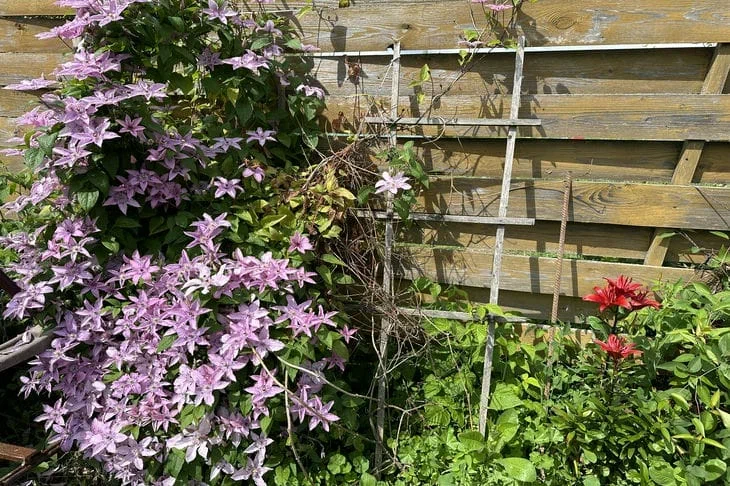Don't think that a hastily planted clematis will delight its owner with lush flowering.
As practice shows, the final result largely depends on the choice of planting location and preparation of the planting hole.
Anastasia Kovrizhnykh, an expert of the online publication BelNovosti, agronomist and landscape designer, told us how to plant clematis correctly.

First of all, the area you have chosen to plant the vine should be protected from the wind.
If you have a plot with high groundwater (80-100 cm), then before planting the vine you will have to work hard to create an artificial mound. In this case, drainage must be placed at the bottom of the hole. It can consist of pebbles, gravel or, for example, brick fragments.
Clematis that is to grow on heavy soils needs a planting hole of 70x70x70 cm. If the soil is light, a hole of 50x50x50 will be sufficient.
The filling can be a mixture consisting of peat, humus (compost), garden soil and sand, taken in a ratio of 1:2:2:1.
Be sure to add 2-3 cups of ash, 100-150 g of mineral fertilizers and 150-200 g of dolomite flour.
Make a mound in the hole from the prepared mixture, place the clematis inside, carefully spreading out its roots, sprinkle with a small amount of the mixture and moisten.
When planting clematis, it should be deepened to protect the roots from freezing in winter and overheating in summer. The planting depth of the tillering node depends on the age of the plant: for young seedlings it should be 5-8 cm below the edges of the hole, for adults - 8-10 cm. The tillering node should be covered with clean sand with the addition of wood ash and crushed charcoal.
After filling the hole, you need to make a hole for watering at a distance of 15-20 cm from the seedling and water the plant again, and then mulch it using peat or humus.

